Carbon Fiber 2017-2020 Nissan GTR R35 EBA OEM Front Fender Emblem Holder For GTR R35
- Portshanghai/ningbo
- Payment TermsT/T,Western Union,MoneyGram,PAYPAL
- Supply Ability50 Piece/Pieces per Month
- Condition100% Brand-new
- Warranty3 Months
- Place of OriginZhejiang China
- Product NumberYCR35268LCF
- Positionfront
- SizeStandard Size
- Car FitmentGTR R35
- OE NO.Unknow
- MaterialCarbon Fiber
- FeatureFactory-direct
- CertificationYes
- Brand NameYachant
- FunctionDecoration+Protection
- Year2017-2020
- Advantage10 Years Experience
- QualityHigh-Quality
- Fitment100% Fitment
- Packaging DetailFoam and bubble wrapping, cupboard box carton
Detailed drawing:
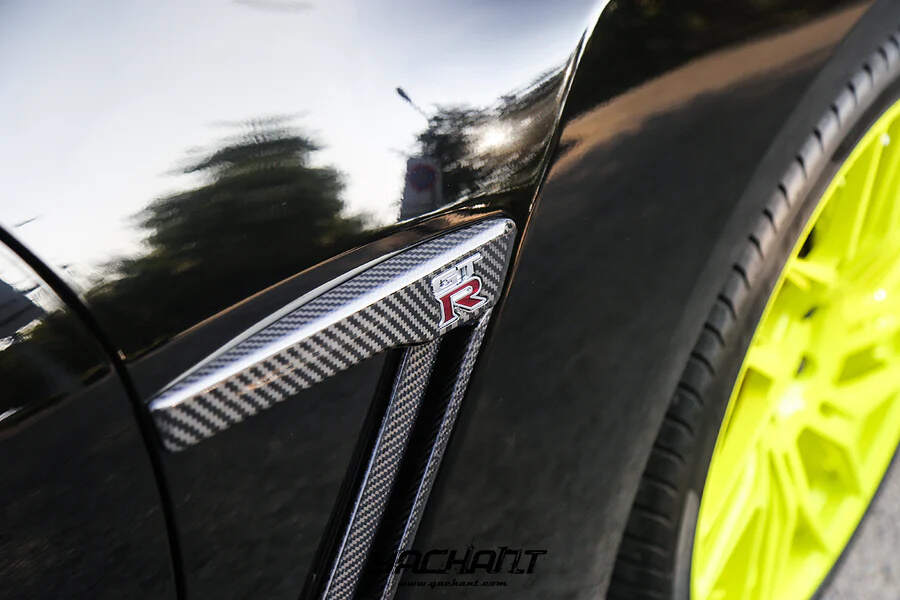
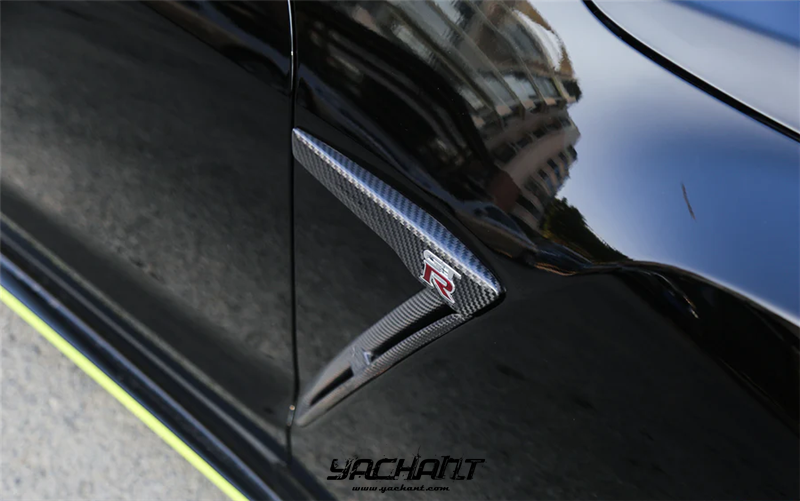
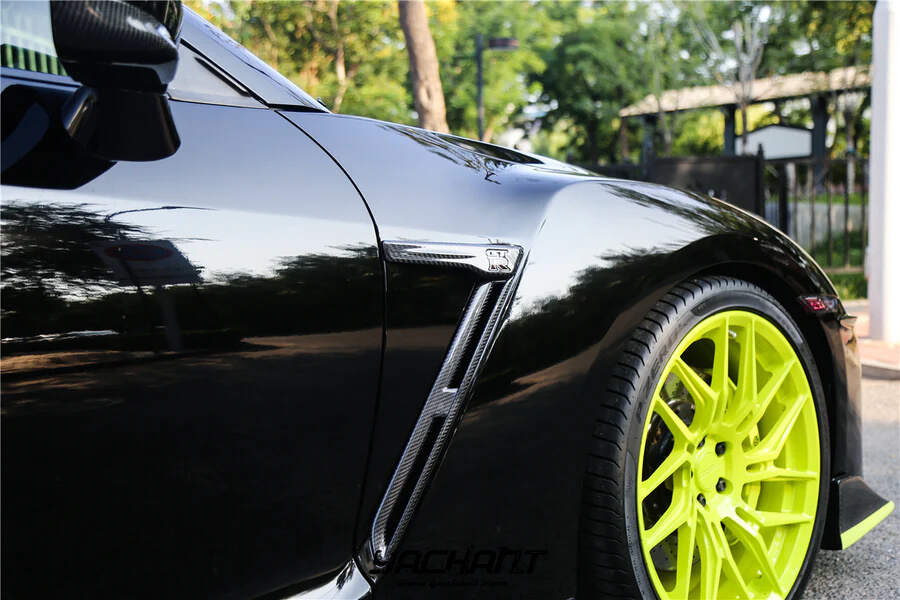
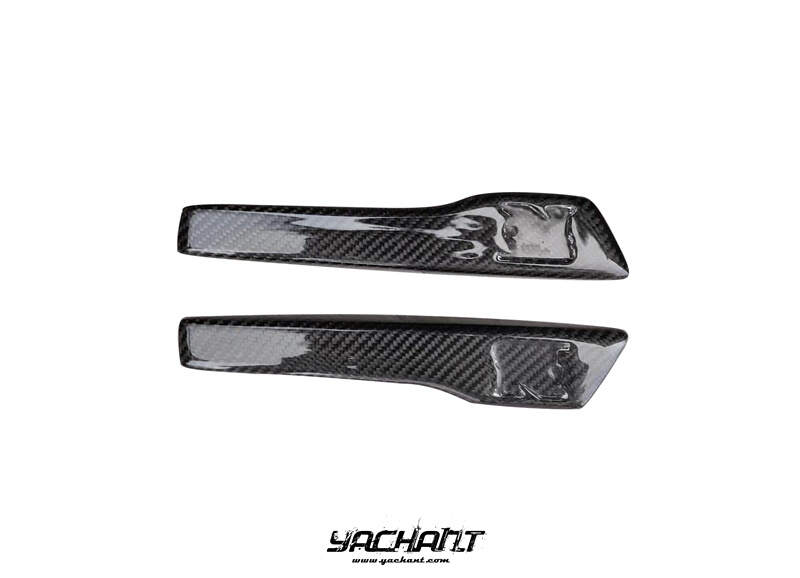
FEATURE:
High Quality Carbon Material
Light Weight
Perfect Fitment
Better Looking
Very easy to install, recommend install on body street shop

Company Profile
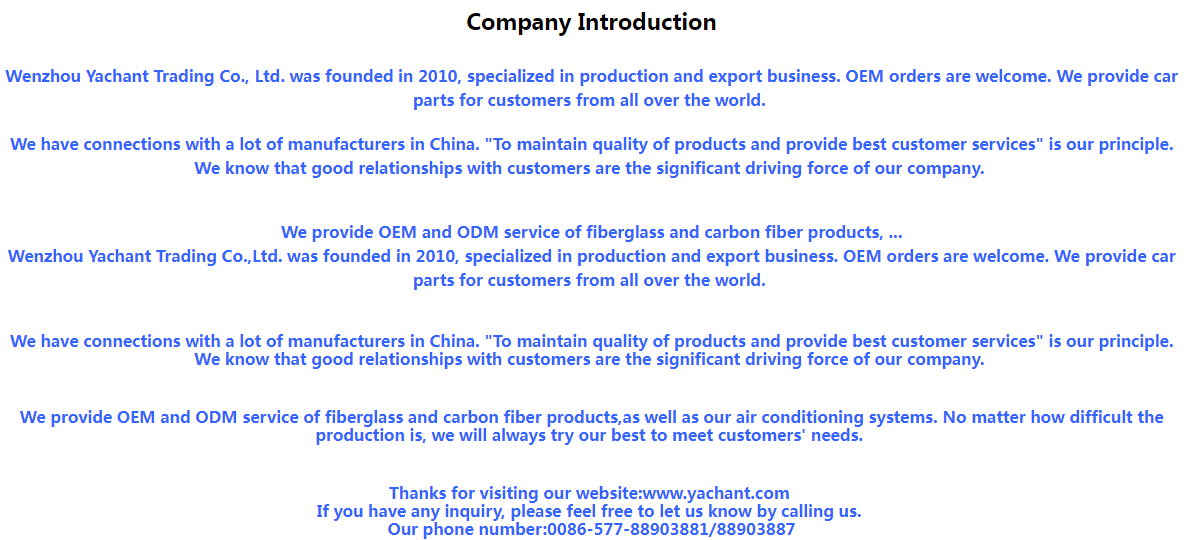 Payment method
Payment method 

Soft and hard carbon fiber
Since it is a fiber fabric material, carbon fiber can be spun into carbon fiber cloth to change from thread to surface, while maintaining ultra-light, soft, and tensile properties. However, how can it become a hard body component?
Soft carbon fiber cloth
The process of qualitative transformation from paper soft to steel tough involves interlacing carbon fiber cloth in the direction of the fibers in the mold, and using epoxy resin adhesive to stand multiple layers of cut carbon fiber cloth together layer by layer. This process requires 5 to 10 layers or even more of thin carbon fiber cloth, which is as thin as cicada wings, to be bonded into a thickened version of carbon fiber cloth. At this point, its flexibility is already very poor, almost equivalent to that of rigid materials. The principle is like completely pasting a page of paper into a thick stack of paper, which becomes sturdy.
Bonded semi-finished products
Afterwards, a high-temperature and high-pressure oven is used to further compress and strengthen the bonded volume. The final product will be the finished blank of the components, which will be processed through processes such as deburring, polishing, and polishing. The shiny body components will be finished. This process may seem simple, but the cost of carbon fiber cloth and process costs still make it impossible to apply it on a large scale, and the products produced are also extremely expensive.
Carbon fiber with a mixture of love and hate
When it comes to love hate, this is because in the field of Formula One racing, all car carbon fiber is no longer a new technology. The fierce competition of every minute and the increasingly strict competition rules force major teams to pay attention to the application of carbon fiber technology. Except for the power system, other components that can be achieved using carbon fiber have already been realized.
The most regrettable thing in the history of racing, Senna, was precisely because during the accident, the hard carbon fiber components (some say the axles) punctured Senna's helmet, causing him to pass away on the spot. In 2007, Kubica's shock hit. Time has passed, and the precision calculation and processing of the single body body body can meet the technical requirements of Formula One racing cars that do not deform in extreme collisions. F1 enthusiasts will surely remember that in 2007, a race car in Kubica, Canada, hit a protective wall at a speed of over 300km/h, and was thrown into the air, falling and rolling on the other end of the track. The car was basically shattered, but the cockpit remained intact, Kubica in the car only twisted his ankle after an inspection, but it didn't delay the next race.
Affordable carbon fiber for everyone
Carbon fiber materials are widely used in civilian mass-produced cars, especially in mid range products. Many manufacturers have also begun to provide small components of carbon fiber materials, such as rearview mirror shells, interior door panels, door handles, gear lever, racing seats, air kits, etc. At the same time, there are also a variety of carbon fiber modified parts that can be installed in the original position in the engine compartment, such as bellows and intake manifolds.
Therefore, the application of carbon fiber materials in the automotive field is becoming more and more widespread. It is believed that in the near future, automobile emissions will become increasingly "low-carbon", while automobiles themselves will become increasingly "high carbon".